Consumers love the lure of exclusivity, and brands love the unmatched opportunity for experimentation.
Pop-Up Shop Ideas
Your goals will dictate the type of pop-up experience you want to create and how you’ll implement it.
1. Temporary Retail Space
If you’re transitioning your business from online to brick-and-mortar, a pop-up shop is a way to simulate the retail experience and gain valuable insights into considerations such as operations and demand… without the risk of commitment and overhead.
2. One-Time Event
From my experience, an event-style pop-up — where the press and public can attend — generates a ton of buzz due to its fleetingness. By leveraging the exclusivity of the occasion, you can use the event to pique interest. Make it a party!
3. Immersive Experience
I like physical spaces because they give customers the opportunity to see, feel, and experience your brand. In my experience, the more you play to people’s senses, the more memorable the experience.
With that in mind, you can use your pop-up shop to provide a unique, immersive environment. That might mean interactive displays or other unexpected physical elements that add a wow factor.
How to Do a Pop-Up Shop
It’s an undertaking to pull off a successful pop-up, requiring a lot of planning, scouting, and marketing leading up to a launch. Here are the main steps you’ll want to consider as you set up:
1. Evaluate your goals and select a theme.
Are you testing the market for a more permanent location? Or are you generating buzz? Knowing your goals will help you determine what kind of space to look for, what type of pop-up shop to run (see above), what supplies to purchase, and how to market and operate it.
2. Scout for a location.
Because your pop-up is temporary (to start, anyway), you don’t have the benefit of word-of-mouth or brand/location recognition. That means you’ll need to choose a location with plenty of foot traffic to maximize your impact.
This consideration, of course, needs to be balanced with the cost of renting the space and the availability of a short-term lease.
Good places to consider include:
- Outdoor stands or kiosks
- Empty storefronts
- Art or gallery spaces
- Marketplace or tradeshow booths
You can also use services such as Peerspace or We Are Pop Up to scout locations.
3. Shop for fixtures and supplies.
Once you know where you’re setting up shop and how long you’ll be there, you can plan your space. I suggest picking a theme or concept, and then purchasing key features like shelving, fixtures, and decor to bring it to life.
4. Plan the launch and opening.
Because your pop-up is a fleeting experience, you don’t get the benefit of long-term clientele building. In my experience, building momentum leading up to the event is critical for its success. For this reason, you’ll want to give yourself enough lead time before the opening to generate interest and also create an experience that will get people talking.
4. Launch and enjoy.
Remember, the purpose of a pop-up shop is connecting with your customers. Sure, it’s all about your brand, but your brand is for them. Your intricate planning sets the stage for an incredible experience, but so does your interactions with them. Be prepared to provide a level of service that has your customers spreading the word, coming back, and remembering your brand once you’ve gone.
5. Analyze and determine what went well.
Take a look at the foot traffic you got, the sales you made, the revenue you generated, and the social media engagement you received.
What worked, and what didn’t? What was your ROI? Is it worth opening a permanent shop or repeating the experience elsewhere? What would you do differently?
Tips for Running and Marketing a Pop-Up Event, from HubSpot’s Events Team
1. Think from a “value-add” perspective.
“To create a successful pop-up experience, it’s crucial to identify your customers and deliver an experience that adds value to their time,” Casie Nguyen, Senior Production Manager at HubSpot, told me.
Once you know who your customers are, you should create an experience that makes their time worthwhile. This could mean offering unique products, experiences, or insights that they can’t easily get elsewhere.
Nguyen adds, “Start by crafting a strategic narrative that weaves through every aspect of the event, from programming and venue selection to culinary options and creative.”
2. Have a clear call to action.
The last thing you want is for your customers to leave your pop-up shop thinking, “Well, that was fun. What’s next?”
That’s why Nguyen recommends giving attendants a clear call to action. For example, this could mean signing up for a newsletter, posting a photo with a specific hashtag, purchasing a product, signing up for a giveaway, or attending another event.
3. Don’t be afraid to do PR.
The media will be your friend in getting the word out. Reach out to local publications to see if you can earn a feature and draft a press release to see if you can earn coverage. It may even be worthwhile to send exclusive invites to a few journalists for the date of your launch.
4. Reach out to local influencers and bloggers.
Influencers and bloggers may have smaller reach than traditional media outlets, but their followings will likely be highly targeted and engaged. Find out how much promotion might be, and don’t be afraid to offer perks!
5. Create an event on Facebook.
Promote to your existing Facebook followers by creating a Facebook event and inviting them. This will spread awareness to your existing fans and increase the reach of your pop-up marketing efforts.
6. Advertise on Facebook.
Facebook has advanced targeting options for audience type and geographical area, making it an ideal channel to spread the word to prospects who don’t know you yet. Read more about how to create a Facebook ad.
7. Email your database.
Tap into your existing customer base and let them know about your pop-up with email marketing. Your campaign will be even more successful if you can segment your database and target your customers in the area.
8. Leverage direct mail.
One of the best ways to promote a local event is through direct mail campaigns to residents in the nearest zip codes. Mailers function as invites to the general public. You’ll also be able to push the promotions you’re running.
9. Generate buzz and FOMO with promotions.
FOMO (fear of missing out) can motivate buyers to show up and engage. You can tap into this with exciting promotional strategies such as contests, freebies, discounts, and door-buster deals.
10. Put out signage.
Signage will help you get the attention of nearby foot traffic, so invest in flyers, banners, and window clings that are attractive and catch the eyes of passers-by. QR codes are a great way to allow customers to scan a code and get more information even if they are on the go. You can use a QR code generator to produce a new code and add it to existing signs and displays.
To inspire your next branded experience, we’ve curated a list of these innovative and visually stunning pop-up events.
19 Examples of Next-Level Pop-Up Events
1. ShopRunner x Coach
For most pop-up shops, the goal is to move inventory. This event by ShopRunner and Coach, however, had other things in mind. Over three days, guests could visit the ShopRunner branded truck, sign up for their app via QR code, and, in exchange, receive a free flower bouquet to gift a loved one for Mother’s Day.
The results? Over 2,500 app sign-ups over three days. Not too shabby, right?
2. Museum of Ice Cream
If you’re an ice cream fan, this one’s for you.
The Museum of Ice Cream brought its famous sprinkle pool to New York’s Hudson Yard to celebrate National Ice Cream Day (it’s July 16th, in case you want to make a note in your calendar). The cherry on top — pun intended — was their collab with Friendly’s, who supplied complimentary ice cream. Guests could also participate in games and win raffles.
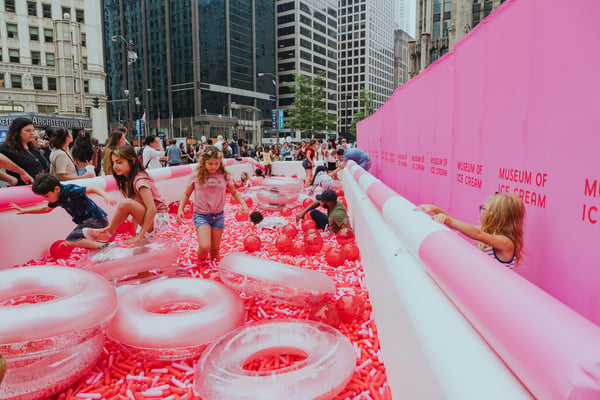
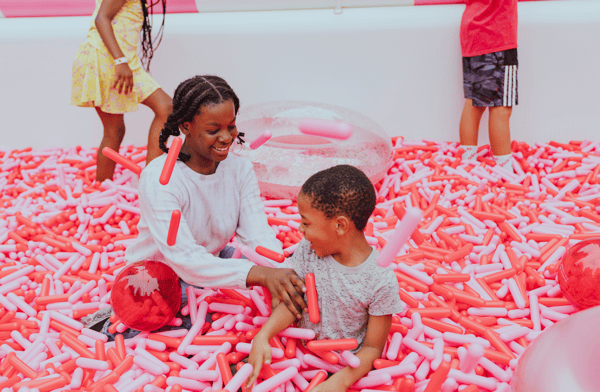
3. Spotify x BLACKPINK
To celebrate BLACKPINK’s new album, BORN PINK, Spotify presented a three-day immersive pop-up that was dreamed up by the group’s four members. It included photo rooms, a pink boba bar, giveaways, and — who could miss it – a cube of mirrors at the center of it all.
One standout feature of the event was the merchandise store, which offered exclusive items only to those in attendance. Such exclusivity is a powerful strategy to enhance perceived value and drive fans to events in the first place.
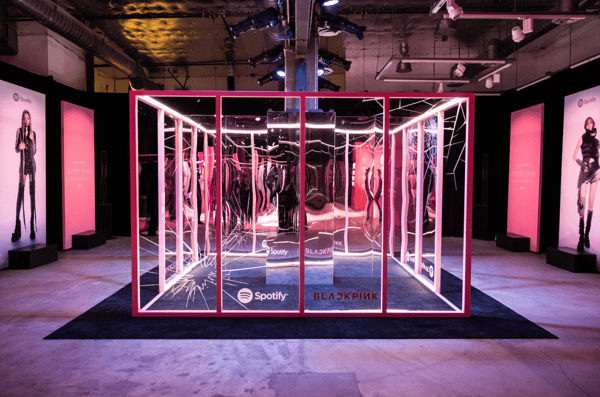
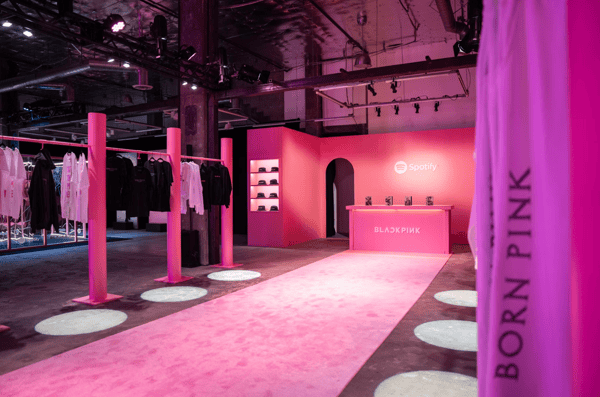
4. Jongga
How do you bring the flavors of South Korea to London? With an immersive, multi-room pop-up that appeals to all your senses, that’s how!
Created by Jongga Kimchi, one of Korea’s leading kimchi brands, the pop-up event spanned three rooms, each showcasing the history of kimchi and its role in Korean cuisine and culture.
The stand-out room, in my opinion, was “Kimchi Alley,” where a rotating lineup of London’s top chefs crafted mouthwatering dishes, all starring kimchi. Londoners could see first-hand how to infuse Korean flavors into their favorite dishes.
5. Only Murders in the Building
Ahead of its third season, fans of Hulu’s Only Murders in the Building could stop at the United Palace Theater in New York City — a real-life filming location from the show – and investigate the murder of Ben Glenroy (played by Paul Rudd).
Upon entering the United Palace, guests were presented with a playbill and a flashlight, free to roam around for clues throughout the theater. This free, two-day event proved to be a fun, immersive experience for fans, with mystery and photo-ops aplenty.
6. Fast Food Aid
Creative directors Ikkyu and Junya Sato noticed that young adults in Harajuku had a serious fast food problem — and they decided to do something about it.
To promote organic food chain Dohtonbori, they launched Fast Food Aid, a pharmacy-inspired pop-up that offers a selection of health supplements aimed at junk food lovers. And all it will cost you is a receipt from a fast food place.
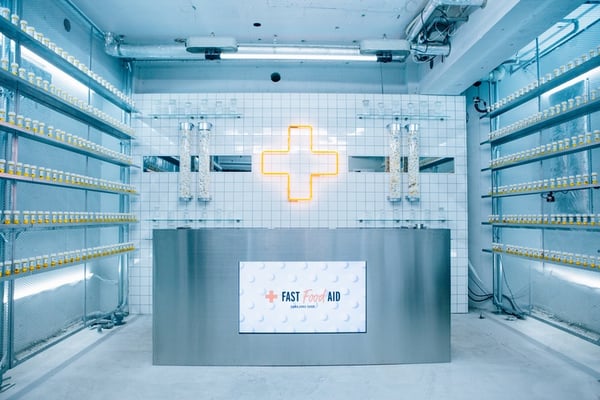
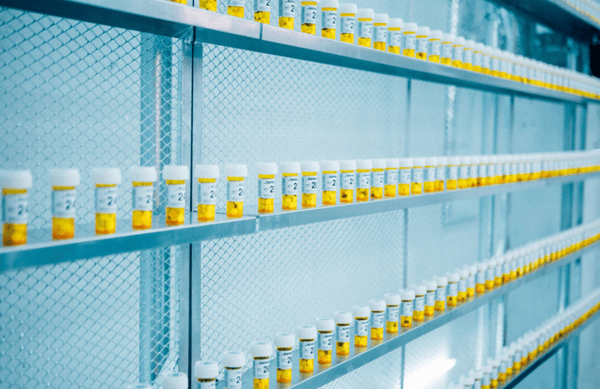
After a guilty indulgence, exchange your receipt for a customized bottle of supplements that will replenish the nutrients missed at your last meal. Each canister is aimed at a particular junk food — ramen, pizza, hamburger, etc. — to make sure your system gets what it needs.
Although Dohtonbori isn’t actually selling anything for profit at the shop, its been able to educate visitors about health and wellness, hopefully driving them to opt for healthier food options in the future – like Dohtonbori’s own restaurant.
7. COS Los Angeles
Experimental architecture firm Snarkitecture was inspired by mirrored surfaces and simple silhouettes when designing this temporary retail space for LA-based fashion label COS.
The folks at Snarkitecture transformed an empty industrial space into two identical, monochromatic rooms — one white and one pale pink ‚ leaving the focus on two racks of minimal clothing. The reflected space “creates an unexpected and altered world for visitors to experience and share.“
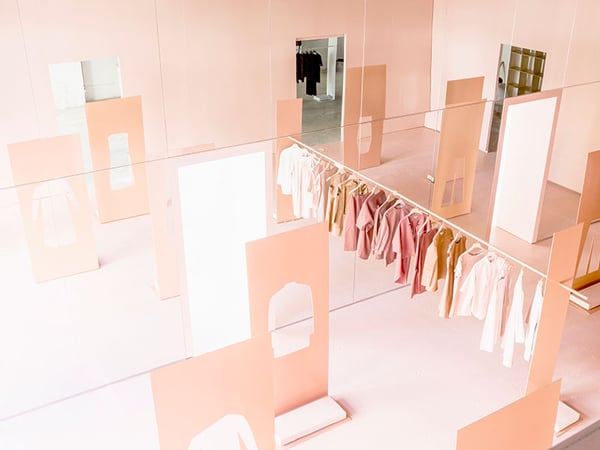
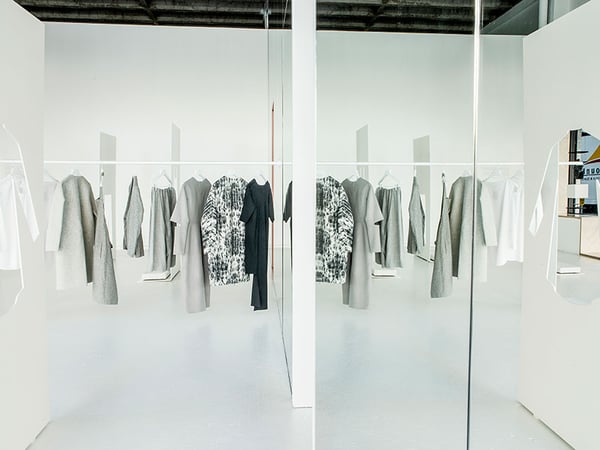
8. Arnsdorf
What’s a designer to do when they’re facing a tight budget? Experiment with creative materials. This pop-up retail space for Australian clothier Arnsdorf was created by using 154 pairs of neutral-colored pantyhose, and the effect is otherworldly.
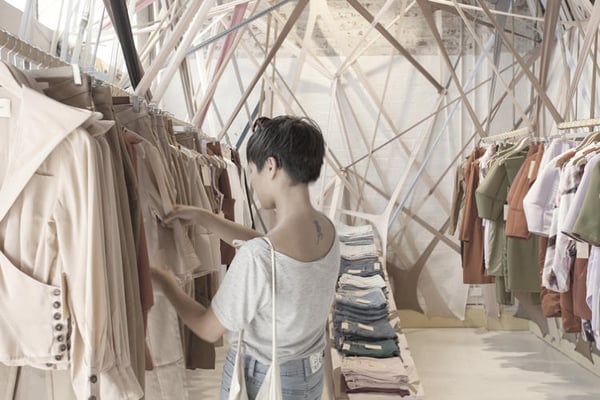
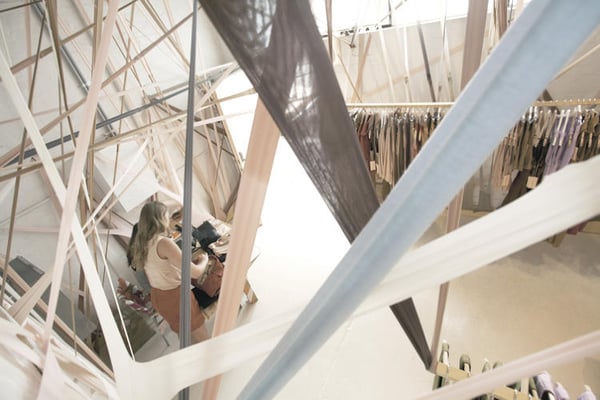
Image Credit: Fast Company
9. Pantone Café
What does color taste like? If anyone knows the answer to that question, it’s Pantone.
The world’s most well-known color company has been running a pop-up café in Monaco for the past two summers, selling a minimal menu of pastries, lunch options, coffees, and fresh juices — all branded with Pantone’s signature color swatches.
So does this mean Pantone is permanently branching out into cuisine? Not quite. The seasonal eatery is perfect Instagram-bait, and it has successfully generated a ton of buzz in the press. It’s a perfect example of a pop-up event enabling a company to take creative risks with its brand by stepping outside of its typical business model.
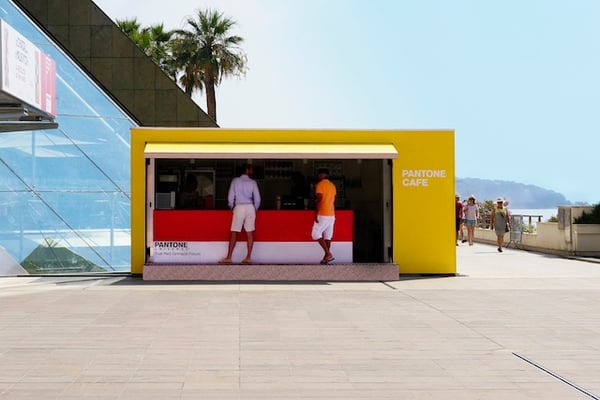
10. The Period Shop
For one weekend, Kotex launched a pop-up in New York aimed at alleviating negativity and spreading love for women during their periods.
The store, which was developed by ad agency Organic, featured ice cream, manicures, chocolate, comfy clothing, and Kotex U products for sale. Women were invited to browse the brightly colored offerings and share their experiences. And it was all for a good cause, too. Proceeds were donated to a women’s homeless shelter.
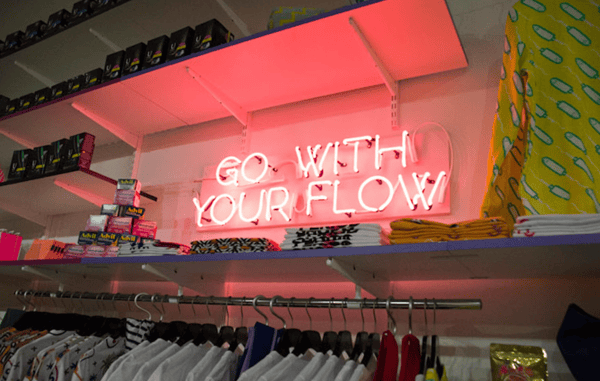
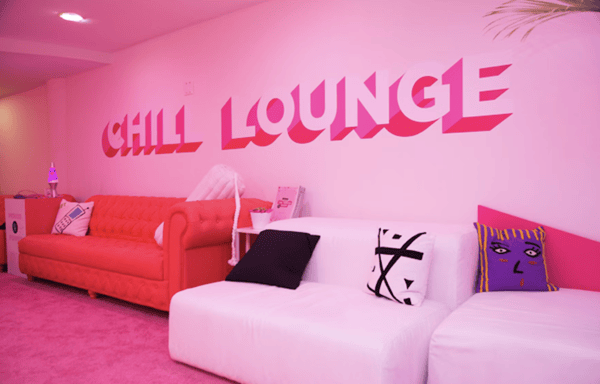
11. Milani
Makeup brand Milani took its pop-up event on wheels. Fans of Milani had the opportunity to stop by their newsstand truck to purchase their new lip oils, snack on some tasty macaroons (flavored after the news lip oil scents), and even snag a product bundle. Fans could also snap a Polaroid picture in front of the truck, covered with Milani branding.
12. Real Life At Work
To offer passersby a glimpse into its world, London-based ad agency Wieden+Kennedy invited graphic artist Emily Forgot to transform the front window of its office into an imaginative, cartoon-inspired pop-up workspace.
Using exaggerated monochrome imagery, Forgot crafted a whimsical office scene from paper, complete with a typewriter and a clock that ran backward.
For a few weeks, real agency employees took turns “working” in the window. The whole thing was then broadcast live via webcam on the agency’s website for anyone who was curious enough to watch.
The pop-up was a unique way for W+K to shrug off the stereotype of the ad agency that takes itself too seriously — plus it was a creative chance for the team to engage with the community.
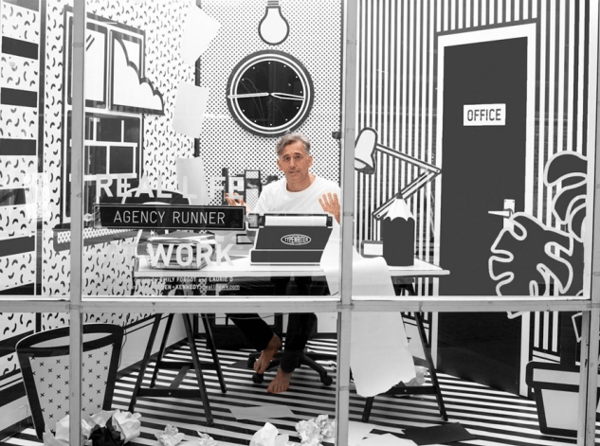
13. Früt
How do you make inexpensive, packaged underwear appeal to high-end consumers? Just create a “luxury” lingerie pop-up with a fake, fancy-sounding name.
CP+B Boulder helped client Fruit of the Loom open up an intentionally pretentious and ludicrously over-priced boutique for its underwear, complete with colorful intimates hanging from over-the-top tree displays.
Früt sold only Fruit of the Loom undergarments, but shoppers who usually wouldn’t deign to buy the brand were lured in by the high-end guise.
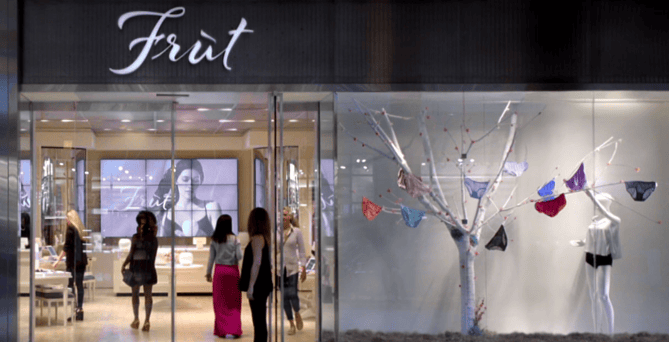
14. Organic Valley Coffee Shop
In a clever shot aimed at the artisanal coffee movement, creative branding agency Humanaut opened up a pop-up cafe to promote its client Organic Valley’s new coffee creamer.
The temporary Manhattan storefront adhered to all of the typical hipster tropes — a minimal logo featuring arrows and X’s, modern glass mugs, and trendy sizes — Lil Bit, Double, and Lotta. And they cast a real Organic Valley farmer as the shop’s folksy proprietor.
There was one catch: The shop only sold measured portions of half-and-half. You ordered your creamer at the counter from a barista and added your coffee separately. The spoof was a major success. Unperturbed by the irony, New Yorkers lined up to order shots of plain cream for $2 a pop. “No one had a problem paying $2 for a pour of organic half-and-half,” said Humanaut’s creative chief David Littlejohn. “In the end, the idea wasn’t as crazy as we thought it was.”
15. 5-Minute Internship
Solve, a Minneapolis-based creative agency, wanted to re-vamp its summer intern hiring process to attract recruits who can really think on their feet. So, naturally, they created a portable, small-scale replica of their office — complete with a receptionist-staffed micro lobby — and set off on an epic college-campus road trip.
Students at participating campuses were given a 5-minute challenge based on their area of interest — and those who performed the best were invited to interview on the spot. The pop-up event tripled the amount of applications the agency received to its internship position.
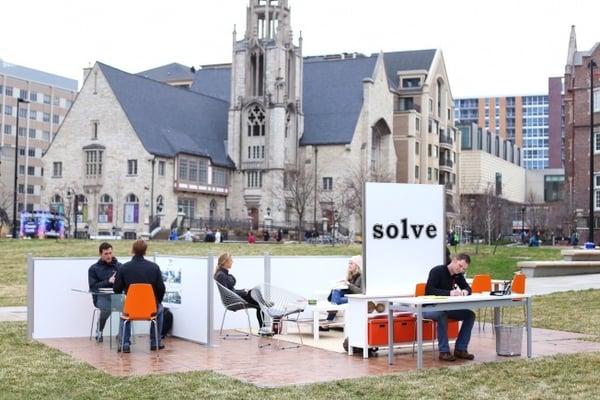
Image Credit: Adweek
16. The Picture House
Capitalizing on the Instagram food photography craze, Birdseye opened up a temporary restaurant in London where diners could settle their bill with an Instagram post — all they had to do was take a snap of their meal and add the hashtag #BirdsEyeInspirations.
The event was a creative social media experiment that helped generate free publicity for the frozen food company’s Inspirations line of products. Branding agency Slice was behind the world’s first pay-by-picture pop up.
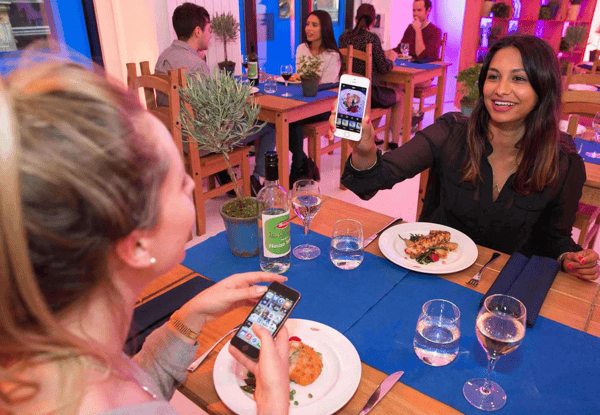
Image Credit: Slice
17. Birchbox’s Tour
Pop-ups give online retailers the chance to show off their goods in person, interact directly with their fans, and take their brand to the next level.
Birchbox – which sells subscription boxes of curated beauty products – went on a national tour in 2015, opening up temporary brick-and-mortar stores in multiple cities with the help of mobile container event company Steel Space.
In addition to selling beauty products, they offered manicures and astrology readings to entice beauty lovers inside.
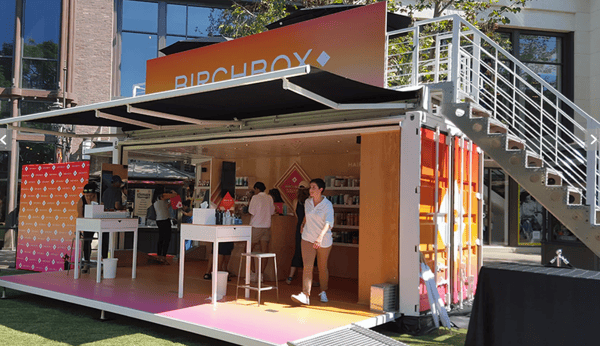
Image Credit: Racked LA
18. Fendi Spring/Summer Flower Shop
The mobile flower shop that botanical designer Azuma Makoto created for Fendi is proof that not all pop-ups need to be large scale productions. The artist adorned a three-wheeled Italian vehicle with an intricate floral display and outfitted the side of the truck as an open storefront. The vendor/driver sold limited edition Fendi bags and vases of Makoto’s floral arrangements to promote the fashion label’s 2016 Spring/Summer collection.
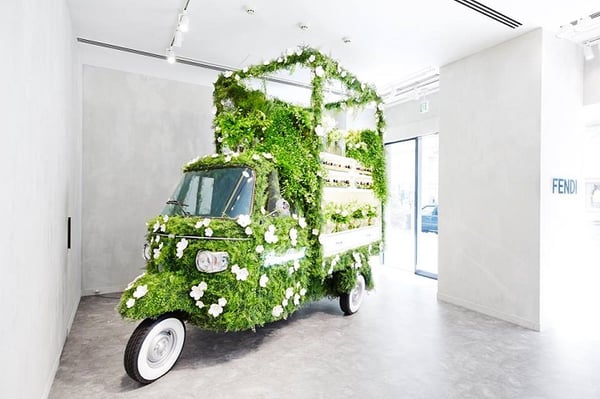
Image Credit: My Modern Met
19. The Poundshop
This design collective is a recurring pop-up platform for artists to offer their goods for affordable prices. “The aim of The Poundshop is to spread design to a wider audience by making it accessible through price and engagement,” the website explains.
The pop-up shops are just as visually interesting as the art they sell.
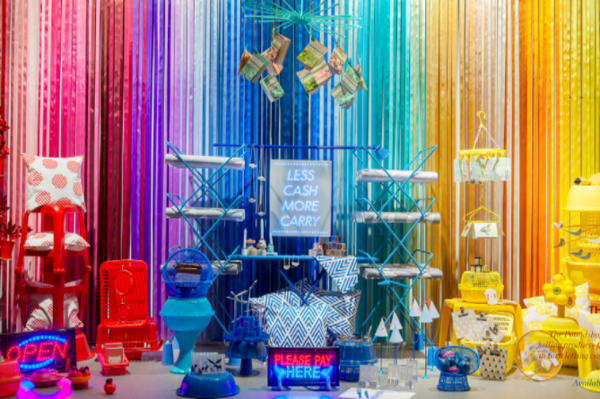
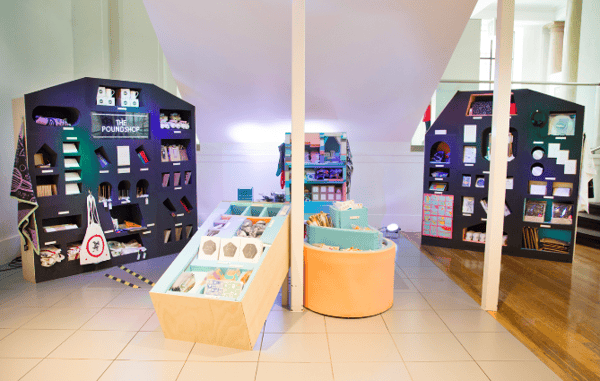
Image Credit: The Poundshop
With a little planning and a lot of preparation, you can make a splash with a pop-up that delights your customers and spreads interest in your brand.
Editor’s note: This post was originally published in July 2018 and has been updated for comprehensiveness.

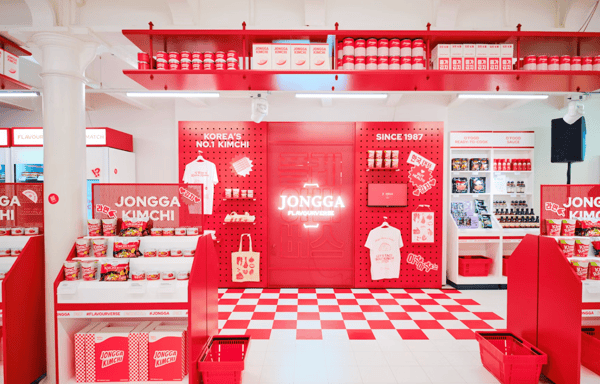
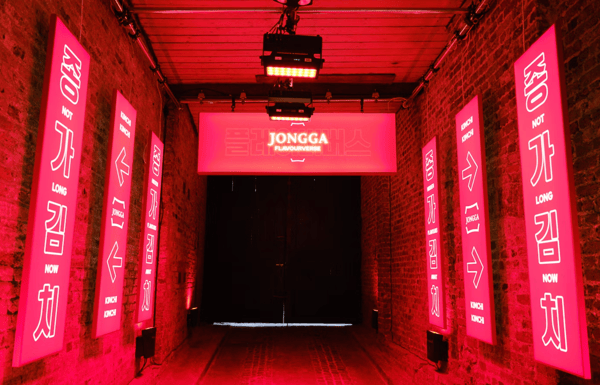
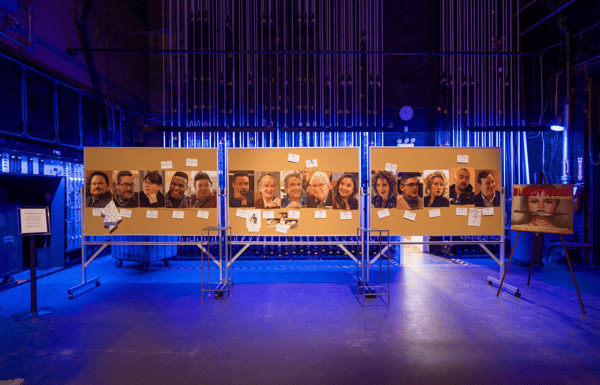
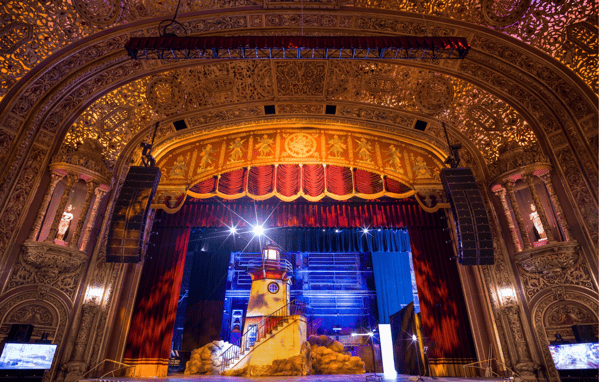
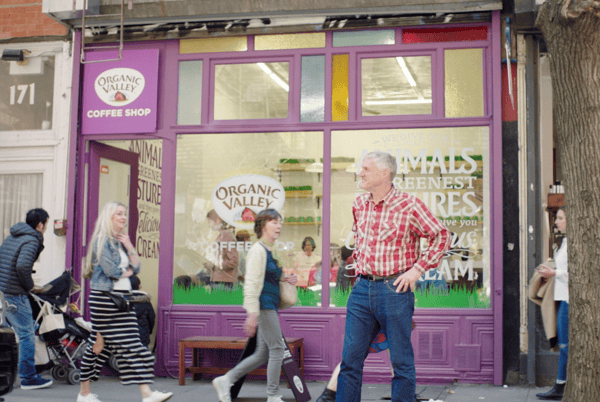
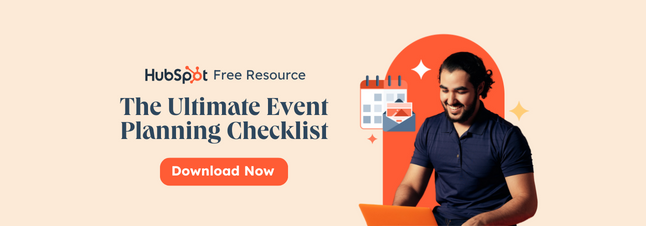


![How to Optimize for Google’s Featured Snippets [Updated for 2024]](https://moz.com/images/blog/Blog-OG-images/How-to-Optimize-for-Googles-Featured-Snippets-OG-Image.png?w=1200&h=630&q=82&auto=format&fit=crop&dm=1724004002&s=13df73104762982790dab6dc8328023f)


